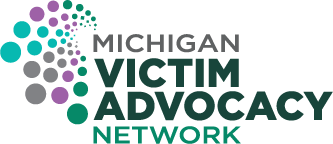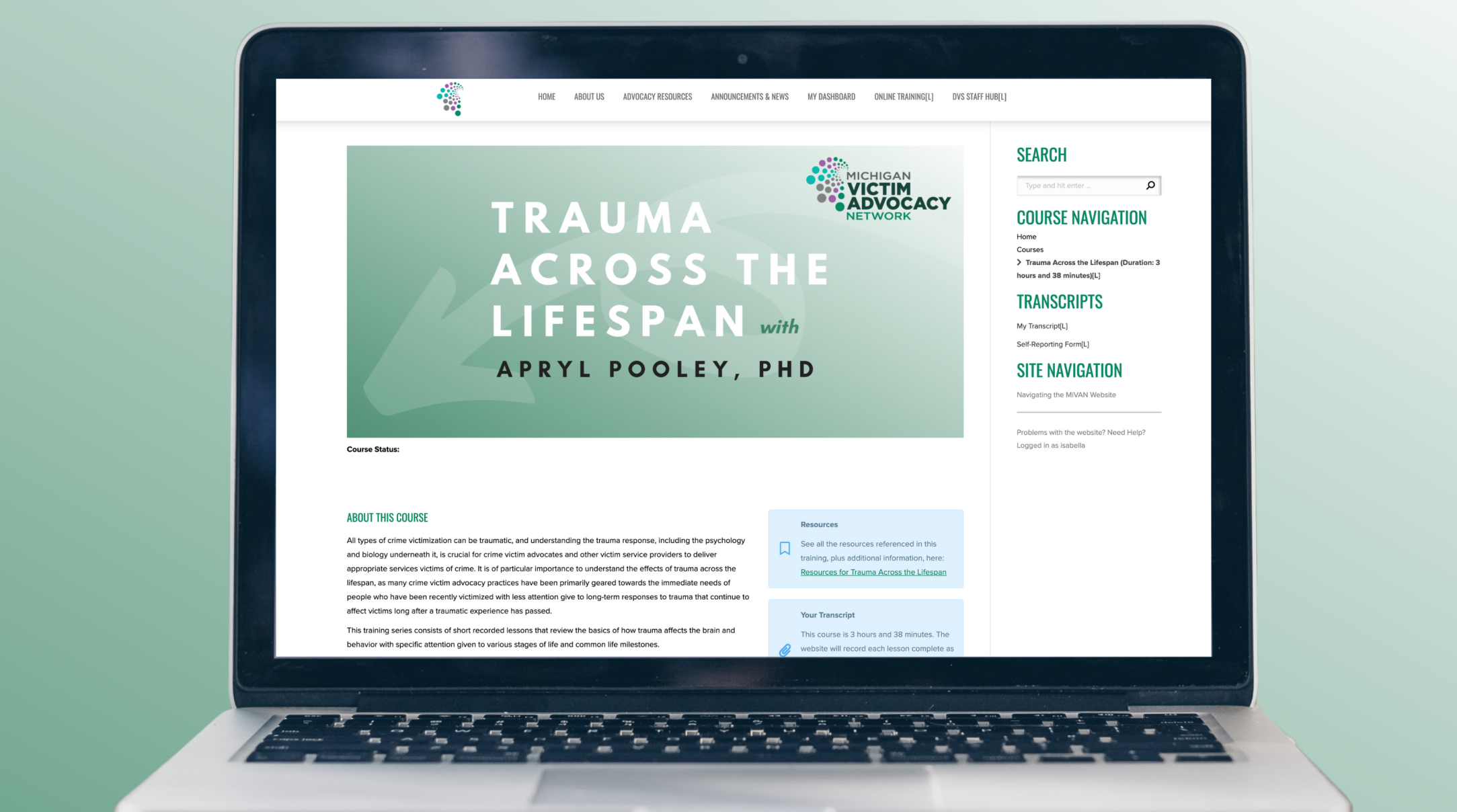MiVAN extends our support of advocates serving communities impacted the shooting at Michigan State University. We would like to invite you to take a look at some of the useful trainings, videos, and other resources available from us and national organizations that highlight ways in which advocates can practice trauma-informed care, especially in the wake of mass violence. These resources include trainings, infosheets, and handouts to share with clients on trauma-informed tools that can promote recovery and healing in both the community and in advocates themselves.
If there are other resources you are looking for, please don’t hesitate to contact us so that we can work together to help you find it.
MiVAN Trainings
To access these MiVAN-hosted trainings, you will need to login with your MiVAN account. If you do not yet have an account, you can register here.
Becoming a Trauma-informed Advocate
This brief (14 min) animated video will provide a foundational overview, address common misconceptions, and introduce SAMHSA’s 6 key principles of a trauma-informed approach. A resource library for more in-depth learning is included. Log in to watch the full video here.
Vicarious Trauma
Vicarious trauma is an inevitable challenge of being a crime victim advocate, but experiencing the negative effects of vicarious traumatization is treatable and preventable. Dr. Apryl Pooley reviews the latest vicarious trauma research and interviews Lisa Tieszen, co-founder of the organizational health agency Resilience Works, to help promote the well-being of all crime victim advocates. View the whole series on Paper to Practice.
Trauma Across the Lifespan
This training series consists of short, recorded lessons that review the basics of how trauma affects the brain and behavior with specific attention given to various stages of life and common life milestones. [3 hours and 38 minutes]
Resources for Working with Survivors of Mass Violence
Helping Victims of Mass Violence and Terrorism
The OVC Training and Technical Assistance Center has a dedicated Mass Violence and Terrorism Resource page that contains more than a dozen recorded webinars on topics related to the role of victim assistance providers in preparing and responding to incidents of mass violence. View the webinars on OVC.
Coping after Mass Violence
This resource, made available by the National Child Traumatic Stress Network, is a fact sheet providing common reactions people may experience after a mass violence event, as well as what they can do to take care of themselves. View the factsheet.
What to Expect in the Wake of Mass Violence
This resource from the National Center for PTSD describes common reactions and types of stress that can continue after mass violence events. There are tips for how to cope in the short- and long-term and consider when to get help. View the resource page. Available en Español.
Psychological First Aid Manual
Developed by the National Child Traumatic Stress Network and the National Center for PTSD, Psychological First Aid is an evidence-informed approach for assisting survivors of disaster and terrorism. Psychological First Aid is designed to reduce the initial distress caused by traumatic events and to foster short- and long-term adaptive functioning and coping. View the resource page.
National Mass Violence Victimization Resource Center
Resources for Victim Service Providers
Victim service professionals supporting those affected by mass violence incidents must be aware of victims’ unique needs in order to connect them to the right resources. The tools here have been developed specifically for readiness, response and resilience, ensuring that victim service providers are prepared for – and can appropriately respond to – a mass violence incident. View the resource page.
Tips for Supporting Victims with Disabilities
This booklet offers tips that first responders can use during emergencies to support and communicate with people with disabilities. The booklet is divided into sections that focus on older adults and on people with service animals, mobility impairments, autism, multiple chemical sensitivities, cognitive disabilities, hearing or visual impairments, and more. View the PDF. [32 pages]
Re-Traumatization Chart
Trauma-informed approaches allow for the opportunity to intentionally respond to the presence of all experiences of trauma and neutralize potential re-traumatization. This infographic created by PACEs Connection illustrates system and relationship dynamics that are often experienced as being re-traumatizing. View the resource page.
Resources for Advocate Resilience and Wellbeing
Tips for Disaster Responders: Preventing and Managing Stress
This tip sheet helps disaster response workers prevent and manage stress. It includes strategies to help responders prepare for their assignment, use stress-reducing precautions during the assignment, and manage stress in the recovery phase of the assignment. This tip sheet is also available en Español. View the resource.
Tips for Disaster Responders: Understanding Compassion Fatigue
Disaster behavioral health response work can be very satisfying, but it can also take its toll on disaster responders. This fact sheet discusses the causes and signs of compassion fatigue and tips for how to prevent it. This tip sheet is also available en Español. View the PDF. [4 pages]
Trauma-Informed Care Tools and Handouts
Recognizing when someone may be experiencing a trauma response such as getting triggered is an important advocacy skill that can help prevent re-traumatizing survivors and promote recovery and healing. These concrete tools can be used to respond to trauma by helping a survivor learn to regulate trauma reactions through breathing techniques, grounding exercises, and guided meditations.
- Grounding techniques (Español)
- Deep breathing (Español)
- Progressive muscle relaxation (Español)
- Free Guided Meditations (in 17 languages)
Vicarious Trauma Toolkit
The Vicarious Trauma Toolkit was developed on the premise that exposure to the traumatic experiences of other people is an inevitable occupational challenge for the fields of victim services, emergency medical services, fire services, law enforcement, and other allied professionals; however, organizations can mitigate the potentially negative effects of trauma exposure by becoming vicarious trauma-informed. This toolkit includes tools and resources tailored specifically to these fields that provide the knowledge and skills necessary for organizations to address the vicarious trauma needs of their staff. View the resource page.

